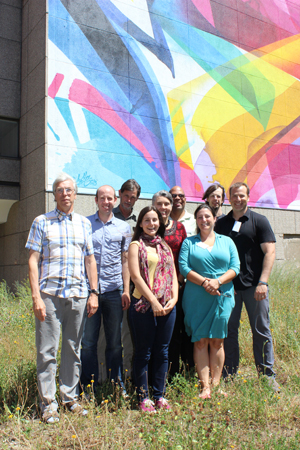Most cities plan to protect biodiversity yet lack mechanisms to measure success
Dr. Myla Aronson (DEENR), doctoral candidate Lauren Frazee (Graduate Program in Ecology and Evolution), Dr. Karen O'Neill (Human Ecology), alum Dr. Emilie Stander, and an international team of urban ecologists, environmental policy experts, and city planners recently published a review paper, entitled "Planning for the Future of Urban Biodiversity: A Global Review of City-Scale Initiatives," in the journal BioScience. The paper describes
the first attempt to characterize the contents of government-sanctioned environmental planning documents from cities across the globe that describe actions or intentions to conserve wild plants and animals in predominantly urban areas.
The study also determined whether or not city plans included protections for open green space and street trees in the aim of improving urban air quality, water quality, or recreational capacity. Analyzing 135 planning documents from 40 cities showed that city plans most commonly include goals for increasing and improving green space and natural habitat areas, air and water quality, and the benefits that people derive from recreation in green spaces. Most plans, however, failed to include any specific, measurable targets that would enable land managers to request resources and effectively move the planning process forward while city officials and planners would also remain accountable. A second article (currently being prepared for publication) delves into the associations between city-level attributes and the distinct types of planning documents that emerged from this initial study. Dr. Aronson and Laurens' coauthors are from institutions in South Africa, Germany, Chile, UK, and three states across the US. This interdisciplinary research project was jointly funded by the National Socio-Ecological Synthesis Center (SESYNC) in Annapolis, MD, the Synthesis Centre for Biodiversity Sciences (sDiv) in Leipzig, Germany, and the Helmholtz-Centre for Environmental Research in Leipzig, Germany.
The full article can be found here.
May 2017





